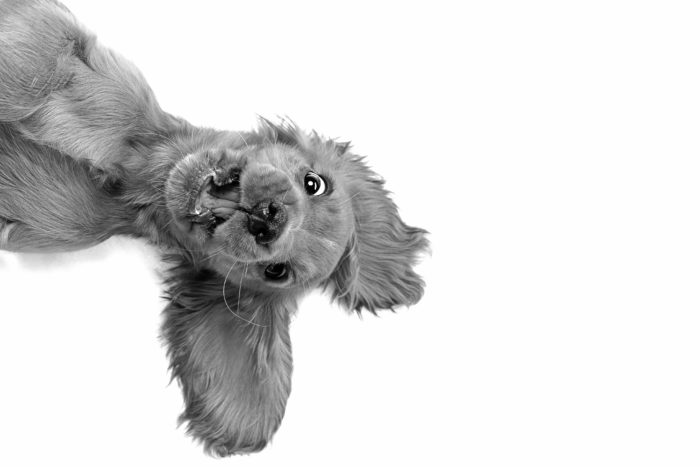
Connection and choice, or control – what does this mean for you and your dog?
When we let go of the idea of control and our goals become centered around the concept of building trust and connection we experience an enhanced relationship with our dog. Let go of old notions of control, compliance, and outdated methods of training. It’s liberating for you and your dog! Read on to learn a few simple tips to start your puppy-raising journey off with a big helping of love and understanding. Who doesn’t want more of that?
Connection
What does connection look like and how can you strengthen it?
You’re walking down the street and your puppy frequently looks in your direction. You strengthen this behavior when you actively watch for it and give your puppy a treat every time they do it!
Your puppy is playing with another puppy. You’re paying attention, but instead of standing still, you are moving around and actively watching for your puppy to look to see where you are. When it happens you cheer your puppy on and feed them some delicious treats.

Choice
What does choice look like and how can you teach a puppy to make *good ones?
For walks, you learn how to use a long line. Your puppy has the opportunity to sniff and explore. Frequently they get to choose which direction to go in and how long they sniff in a particular spot.
You leave it up to your puppy whether or not they will interact with people you see on your walks. You pay attention to your pup’s body language and advocate for his comfort. Does he want to interact with that little kid that is grabbing at him? Can you put a little pile of treats on the ground so he eats these instead of jumping up on someone? Now he learns to make the *good choice of keeping four on the floor instead of jumping.
You provide a safe spot for settling and appropriate things to chew. You manage the environment so that your puppy is set up to settle in the ‘right spot’ or chew the ‘right thing.’ Use no-skid mats, a variety of chews, and pay attention. With this input, your dog will learn to settle when you settle or chew on ‘legal’ versus ‘off limit’ items. Things we call *good choices.

Control
What does control look like and why it shouldn‘t be a goal.
A short leash and no treats will result in lots of pulling, stopping, and frustration for you and your pup. As time goes on this will result in more pulling and little to no connection between you as you move through space together. You will be steering your dog versus enjoying a relaxing walk together.
A bath, groom, or nail trim with a heavy-handed restraint and no attention given to how the puppy is feeling. This will result in fear and panic when the dog needs routine handling. This will cause your dog and you no end of stress as the years go on.
Not under your control at all times means no freedom for your dog or for you. The dog can‘t be trusted by an open door because he never learned to make the choice NOT to run out of it. The dog can‘t be trusted around food on the counter since he never learned to make the choice NOT to grab it when you leave the room.
What if it was you?
If someone else was in complete control of your mental and physical health and they held the key to your freedom which path would you want them to take?

